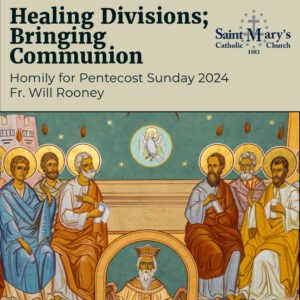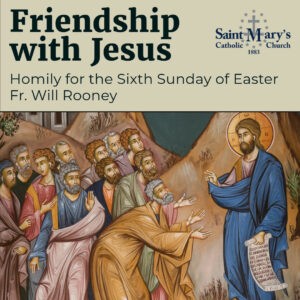The Collect of the 4th Week of Advent, a masterfully crafted prayer dating from the eighth century, comprehensively, “situates the mystery of Christ’s incarnation and birth in the context of his saving death and its full effect: our resurrection to glory.”[1] The prayer, which will be familiar to those who are accustomed to praying the Angelus, is as follows:
Pour forth, we beseech you, O Lord,
your grace into our hearts,
that we, to whom the Incarnation of Christ your Son
was made known by the message of an Angel,
may by his Passion and Cross
be brought to the glory of his Resurrection.
Who lives and reigns with you in the unity of the Holy Spirit,
one God, for ever and ever.
This prayer “admirably binds together the two Advents of Christ and in the final petition connects the last Sunday of the season with the first two on which we prayed to be at Christ’s side in his kingdom and to be admitted to his company in heaven.”[2] We thus see that the reason Christ, the King of Kings, came to us in humility, born of the Virgen in Bethlehem “was His immense mercy, His multiplied compassion, His abundant charity,” which finds its ultimate expression in the Cross.[3] St. Bernard goes on to explain that although we should have gone to Him, he instead came to us, because:
“there stood a twofold impediment in the way… our eyes were heavy, and He “dwelt in light inaccessible.” We lay as paralytics on our beds, and could not raise ourselves to the Divine elevation. Wherefore this most benign Saviour and Physician of souls descended to us from His lofty throne, and tempered His brightness to the weakness of our sight. He clothed Himself with His most glorious and spotless body as with the shade of a lantern, thus attempering to us His splendor.”[4]
The Incarnation is an act both of supreme humility and supreme mercy. As St. Irenaeus points out so beautifully, “the Word became man, and the Son of God became the Son of man: so that man, by entering into communion with the Word and thus receiving divine sonship, might become a son of God.”[5] The wood of the Manger, and the wood of the Cross, are intimately bound up in each other, for in one manner of speaking they are but one action of divine providence undertaken for our salvation; the Incarnation is the beginning of the kenosis which will be completed on the Cross when Christ breathes out the words “consummatum est”[6]. Each year we journey liturgically speaking from the Manger to the Cross and Resurrection, walking with Christ through His life on Earth and rehearsing, hopefully, our journey in communion with Him to salvation. Indeed, even at each Mass we see a microcosm of this year long liturgical drama, for Christ is expected, comes, is broken and offered, and then those who are being sanctified participate in Holy Communion which is the Sacrament (sign) of the Heavenly Communion for which we long.
Conclusion
In closing, let us return once more to the meaning of Advent as a whole, which contemplates the mystery of God made flesh, in order to move us to desire ardently communion with Him for the sake of our salvation. Writing about the choice of “Adventus” as the name for the season, Ratzinger comments:
“The Christians adopted this word in order to express their special relationship to Jesus Christ. For Christians, he was the king who had entered this wretched province Earth and bestowed on it the gift of his visit; and they believed that he was present in the liturgical assembly. In general terms, when they used this word, they intended to say: God is here. He has not withdrawn from the world. He has not left us alone. Although we cannot see him and take hold of him as we do with objects in this world, nevertheless he is here, and he comes to us in many ways.”[7]
Thus we recognize that our ours is a faith that sees in the world, in persons, and most especially in the Liturgy, small comings of Christ which prefigure his ultimate coming, at the end of time, and which were made possible and were prefigured by his first coming in the Incarnation. This is Advent in a nutshell – an opening of the eyes, so we can see, the Advents, big and small, in our lives, that we, “to whom the Incarnation of Christ your Son
was made known by the message of an Angel,” might live in communion with Him now and forever.
[1] Lauren Pristas , Collects of the Roman Missals : A Comparative Study of the Sundays in Proper Seasons before and After the Second Vatican Council (London: Bloomsbury T&T Clark, 2013), 53, 55.
[2] Patrick Regan, Advent to Pentecost : Comparing the Seasons in the Ordinary and Extraordinary Forms of the Roman Rite (Collegeville, Minn.: Liturgical Press, 2012). 33
[3] Saint Bernard, Sermons of St. Bernard on Advent & Christmas: Including the Famous Treatise on the Incarnation Called “Missus Est” (London; Manchester; Glasgow; New York; Cincinnati; Chicago: R. & T. Washbourne; Benziger Bros., 1909), 10.
[4] Ibid. 11.
[5] St. Irenaeus, Adversus haereses. 3, 19, 1: PG 7/1, 939.
[6] John 19:30
[7] Benedict XVI, The Blessing of Christmas, trans. Brian McNeil (San Francisco: Ignatius Press, 2007), 17–18.





